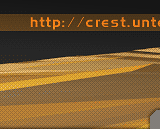


 |
 |
 |
| home | news | scene | reports | diskmag pack | new zealand | down | links | about |
demoscene book review
the content the book contains chapters about the history of the demoscene (from the first homecomputers to actual console and mobile device demos, of course also covering what the term 'demo' is standing for), a chapter about tracker music (including an interview with the maker of the gameboy music program 'little sound dj'), a chapter about demoparties (especially about the gathering since this chapter was edited by gloom) and last but not least a chapter about the demoscene exhibition by katastro.fi in 2003. the last pages are reserved for a look on the different demoscene eras (old-/middle-/nuskool) and the greetings. positive and negative points the 'brief history of the demoscene' is in fact the biggest chapter in this book with more than 20 pages. for people which are new to this kind of computer art it's a good overview how the demoscene evolved and growed. inside views how swappers have tried to save money for stamps are funny. the comparison between making a demo and making a theater performance is done in a very good way and makes things much more clear. but bill gates (mentioned together with linus torvalds) as a hero of our time? the chapter about demoparties is only focussing on the gathering, but it gives you a good overview how the party started and evolved. i doubt that the gathering '96 was the biggest computer party of the world, just thinking about 'the party' in denmark or assembly in finland ('96 was my last assembly). inside views are that the organizers tried to get an entry in the guinness book of records for the 'largest temporary computer network' (but the guinness people didn't came to norway). the chapter about the
demoscene exhibition in 2003 describes how the exhibition was made and gives you a more detailed description about several works which were shown there. the pages about the demoscene eras describe typical things of the three eras (computers, demo features, typical parties, status of the first sceners etc.), but i doubt that the most first sceners of the oldskool era were dreaming of a 'job in a national game magazine'. conclusion demoscene: the art of realtime is for sure a very informative book for people which are new to this scene or just want to know more than the typical hacker cliché. it's also a book which sceners can give their friends. the many demo pictures are a good appetizer to investigate on your own. |